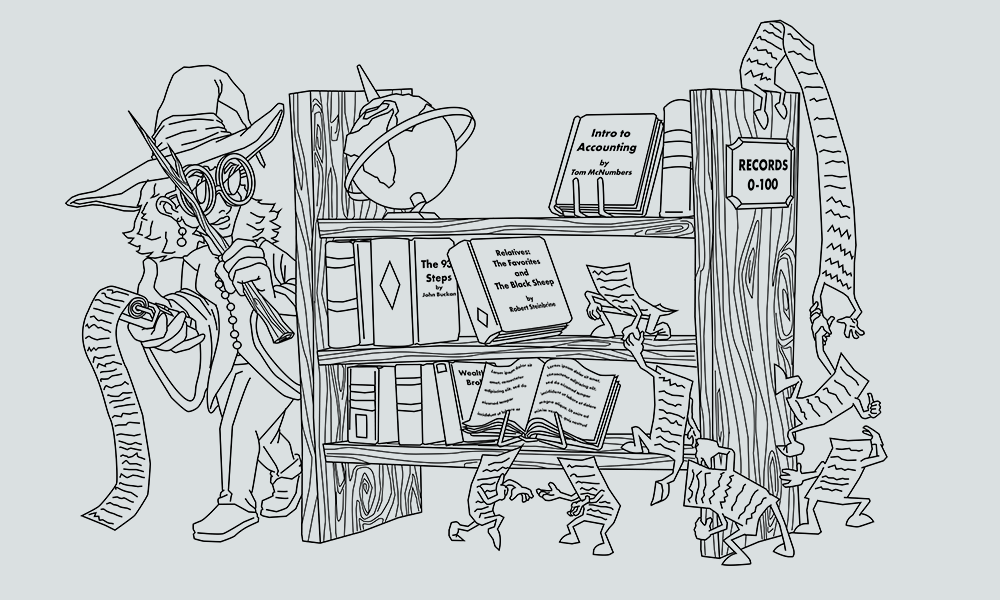Communicating complicated analyses in a way that is easy to understand is a skill accountants are constantly developing. Being able to translate their processes and findings to an audience that does not understand accounting is a challenge, especially when these findings contradict the beliefs of the clients they are speaking with.
The accountant was called in to perform high-level analytics to solve profitability issues with a new client. The client’s production manager sent daily updates on the business’ production profitability to his CEO. Despite the profitability always reading high, the numbers on the income report were always negative.
The production manager figured out the company’s profitability by using a combination of the numbers available to him. Every day, he subtracted the cost of production, including labor and raw inventory costs, from estimated customer orders. His work resulted in what they defined as “profit.” However, when the accountant calculated the gross margin on her own, her result was much smaller.
“The deeper we looked, the more issues we saw.”
Sometimes, companies don’t properly define what items should be included in the cost of production and things get overlooked. During her investigation, the accountant found that the production manager did not factor in certain mangers’ salaries, shipping costs, or customer discounts—leading to an artificially high profitability figure.
Another discrepancy was the cost of their inventory. The production manager based his numbers on historical assumptions that were outdated. On occasion, he would use data that came from the company’s inventory management system that was not well maintained. There was no standard for how numbers were input into the system and no process for double-checking or auditing them. Therefore, the reports coming from that system were unreliable.
“The deeper we looked, the more issues we saw. People were putting in the numbers, but no one was checking to see if they even really had any meaning. They just assumed everything was right.”
The accountant used her experience to review the system setup and internal processes. She performed a highly detailed analysis to verify the actuals against recent trends. She used the general ledger, physical records, and historical data to make sense of what actually had meaning for the company.
“The word ‘profit’ is a dangerous, dangerous thing. It inherently implies a meaningful number in a company, however, when that number is confused or not in alignment with the accounting definition of the word, it can easily skew your understanding of your company’s performance.”
The company had been using the word “profitability” for years without questioning the foundation of that profitability. The accountant had to present her findings to the CEO in a way that outlined the real “true profitability” of the business, which was a lot lower than the number presented to him daily.
The accountant used the details of the business’ general ledger, payroll, and transactions to develop easy-to-follow reports showing the business’ true profitability. She created an agenda to explain to the CEO that the lack of an audit trail and process to double check the number led to a confused calculation of the gross margin.
The accountant showed the CEO that they were simply tracking a series of numbers that did not match the actual money that was spent and earned in the company. Because they confused the meaning of “profit,” they unintentionally connected the business’ performance to the tracking of production they were doing, without double checking what exactly they were tracking and if the numbers were real.
“Our reports are comprehensive. They really paint a picture of the business’ actual revenue and explain each step we took to reach that number. If he doesn’t understand our explanation, he can look at the reports to see our work in action.”
During their conversation, the accountant was able to walk the CEO through her process of calculation, showing him the variances between the profit margin, what should go into calculations to accurately represent the performance of his business, and the importance of peer review and process to periodically double check costs. Even though the conversation was tough, the accountant was able to explain the true profitability of the business and offer suggestions on how to cut costs and increase the profitability, starting with peer review.
“The conclusion was a shocker. Not everyone is ready to see that their business’ performance is different than they expect. But that’s what we were hired to do. We were able to not only show him his true profitability, but through analysis and conversation we were able to provide deeper insights and uncover issues to help his company become more profitable.”
Share this article




